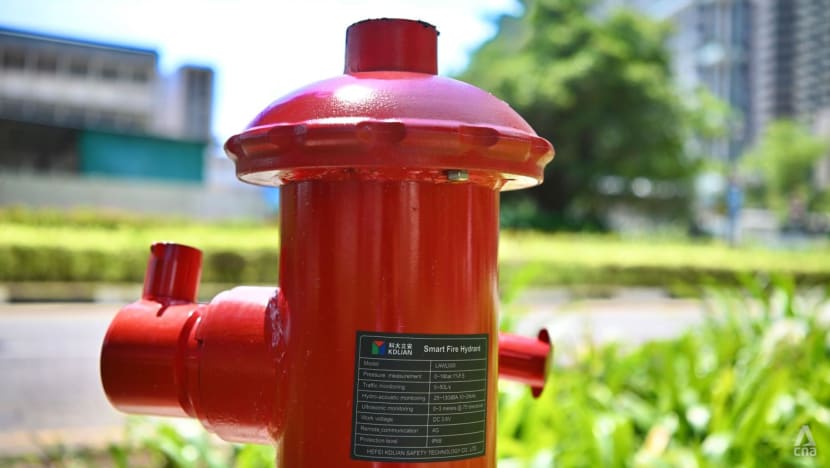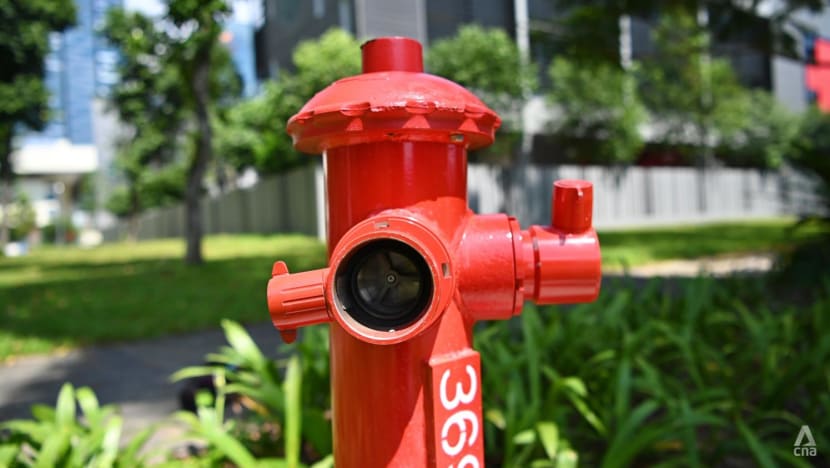Singapore trials new fire hydrants that are easier and faster to operate
SINGAPORE: The Singapore Civil Defence Force (SCDF) and national water agency PUB have introduced a new "smart" fire hydrant that is easier and faster to operate and has sensors that automatically measure water flow and pressure.
The new hydrant speeds up the process of obtaining water during an emergency by about 60 per cent, the agencies said in a news release on Tuesday (Dec 21).
“This time saving is crucial as in a life-threatening emergency such as a major industrial fire, every second counts,” the agencies said.
The agencies started a year-long proof-of-concept trial on Oct 26, with a smart hydrant prototype installed along Prince Edward Road. If successful, the agencies will jointly explore the wider implementation of the hydrants in Singapore, they said.
Major Muhammad Shafi' Rafie, commander of the Marina Bay Fire Station, which is next to the location of the new hydrant, said the trial will include assessing the reliability of the hydrant and the accuracy of the data collected by its sensors.
Authorities will be able to do a one-to-one replacement of existing hydrants as the new design is compatible with the existing hydrant connection fittings to the water network.
This will require only “minor works with minimal excavation” as the existing underground valves and pit cover access will be retained, the agencies said.


Singapore has nearly 23,000 public hydrants across the country. They come in three versions - ground hydrants, triple pillar hydrants and double pillar hydrants - and have been largely unchanged in function and design for the past 40 years, the agencies added
Currently, firefighters must go through a multi-step process that takes an average of one minute in order to operate a hydrant.
Firefighters first use a key to lift and remove the hydrant pit cover, and then another extendable hydrant key to open an underground valve that discharges the water. The pit cover could also be difficult to open due to rust and soil movements, costing firefighters precious seconds.
They must also bring along a hydrant tool kit, comprising fire hose coupling adaptors for the hydrant arms.
The smart hydrant, on the other hand, does not require adaptors and has a control valve on top that is operated using a single customised spanner.
This means firefighters will be able to connect their hoses directly to the hydrant and will no longer need to remove the pit cover to access the underground valve.
The improved process takes an average of 40 seconds.



EASIER TO MAINTAIN
Beyond ease of operation, the smart hydrant also uses cloud-based telemetry and integrated sensors that send out automatic alerts on the actual pressure and flow of water.
“This ensures that there is adequate water supply during SCDF’s emergency operations while also tracking the exact water usage by SCDF emergency responders during firefighting operations,” the agencies said.
The sensors also make testing of the hydrants easier, as authorities do not need to take manual measurements of the water pressure.
PUB manages Singapore’s water supply network and works closely with SCDF to ensure that hydrants are well-maintained.
Presently, SCDF tests public hydrants at least once a year for serviceability and the water network’s ability to deliver optimal water flow and operating pressure.
It takes about an hour for a team of four firefighters to test three fire hydrants, the agencies said. This adds up to about 28,000 man-hours each year spent checking the functionality of hydrants.
“The time saved in hydrant testing could be channelled towards performing other important frontline tasks. such as in conducting fire safety enforcement checks, training and operational exercises,” said SCDF’s director of operations department Colonel Anthony Toh.
















